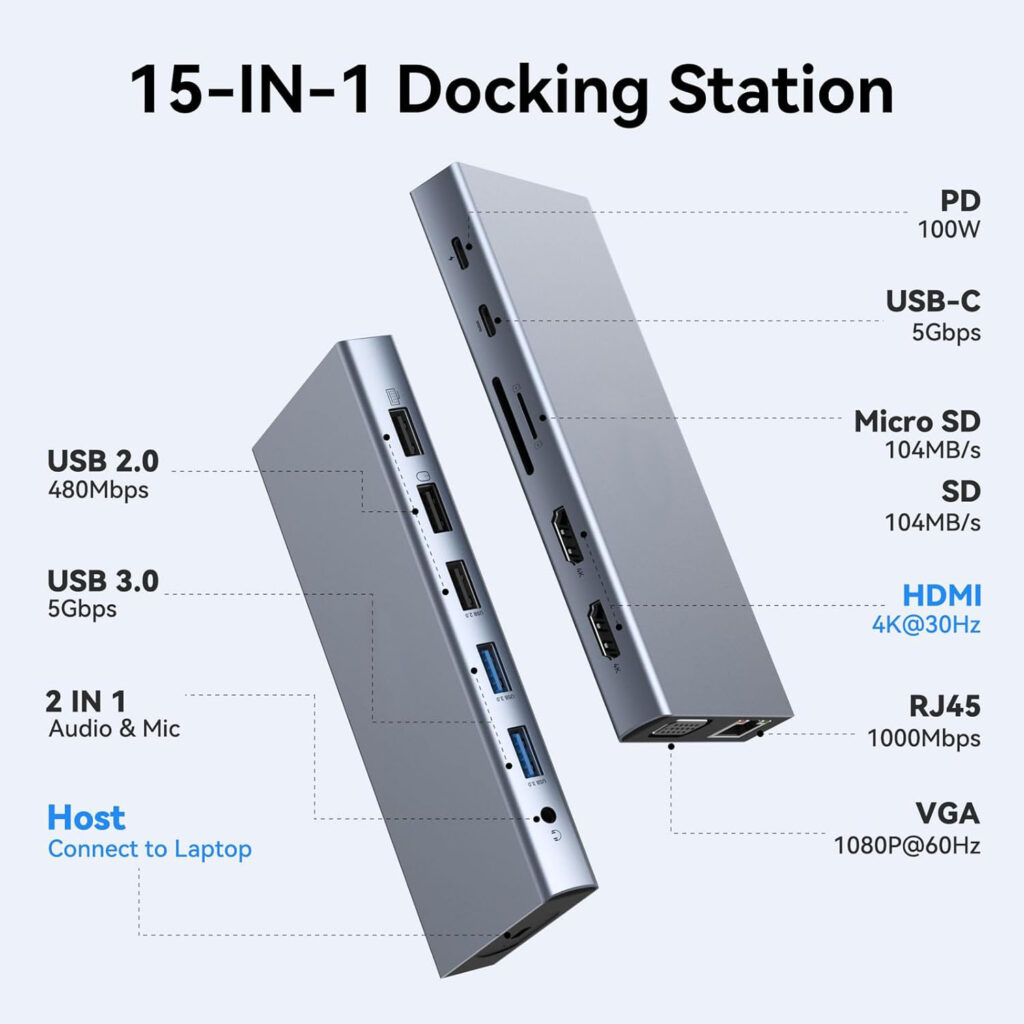How do I know if my laptop supports USB-C docking?
To determine if your laptop supports USB-C docking, here’s what to check:
1. Look for a USB-C Port with a Thunderbolt or Docking Icon
- If you see a Thunderbolt icon (a small lightning bolt) near the USB-C port, it typically supports Thunderbolt 3 or 4. Thunderbolt ports offer high data transfer rates, multiple display support, and power delivery, making them ideal for docking stations.
- If you see a docking station icon (often a small rectangle or display symbol), it usually means the port supports USB-C docking with power and data capabilities.
2. Check the USB-C Port Specifications in the Laptop Manual
- The user manual or technical specs on the manufacturer’s website will list the capabilities of each port. Look for descriptions like “DisplayPort Alt Mode”, “Power Delivery” (PD), and data transfer speeds (e.g., 10Gbps or higher).
- Ensure the port supports DisplayPort Alt Mode if you want to connect external displays, as not all USB-C ports can handle video output.
3. Look for Thunderbolt or USB4 Compatibility
- Thunderbolt 3, Thunderbolt 4, and USB4 all support a broader range of docking functionalities, including faster data transfer, high-resolution displays (4K and beyond), and reliable power delivery. If your laptop has one of these, it’s likely compatible with most USB-C docks.
4. Test the Port with a Basic USB-C Hub
- Using a simple USB-C hub (with power, data, and video output) can help you test whether your laptop recognizes connected peripherals, monitors, and charging. If these features work, your laptop likely supports USB-C docking.
5. Contact the Laptop Manufacturer for Confirmation
- If you’re unsure, reach out to the manufacturer’s support team. They can confirm if your model is compatible with USB-C docking and may even recommend specific docks that work well with your device.
Checking these factors will give you a good indication of whether your laptop is compatible with USB-C docking.

